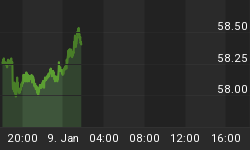Just when you thought that no pair could be more mismatched than the Virgin Mary and a grilled cheese sandwich, the cultural world brings us the marriage of finance and... fine art.
Try and picture it: Wall Street and wall... paintings? Business statistics and... brush strokes? Stock portfolios and... palettes? Economic earnings and... easels?
An unlikely union, indeed. Yet, as The New York Times informed us in a Dec. 1 article, today's hottest financial investment is NOT in the stock, bond, or currency markets. Instead, it's hanging over your living room sofa. The story says:
"Art prices are setting records again. In early November, 'No.6' by Mark Rothko was auctioned for a record $17.4 million, almost 50% above the top end of estimates... Not only are modern and contemporary artists being treated like pop starts, but earlier American masters are also soaring like late-1990's Internet stocks...These rates of return are now attracting the interest of financial investors..."
Introducing: the New York-based Fernwood Art Investment company, which next year plans to establish several funds to buy and manage art portfolios. Bear in mind, this Big Apple firm is not a new idea; it's jumping onto a bandwagon of art investment companies that started moving through Europe over nine months ago.
How large has the bandwagon become? Well, "virtually every bank on Wall Street has an art advisory group to assist rich clients." In the words of one economic scholar, "art prices have a low correlation with stocks, so art can enhance the performance of a portfolio of equities." Nothing abstract about that idea.
Too bad it's wrong. See, back in June 2004, when the "red hot art market" started to catch fire, the Elliott Wave Financial Forecast offered this unique insight into the trend:
"The obsession with painting is an extension of the panic for stuff... Art prices are not strictly commodities. Their prices are also influenced by social mood as reflected by stock prices and regulated by the Wave Principle."
This speculative fervor is propelled by the same bullish optimism that has today's investor leaping into hedge funds, small caps, internet stocks and the like.
And the one thing we noticed about art prices (which the mainstream press seemed to miss) was this: They "appear to save their boldest moves for the aftermath of the big advances in stocks." We offered this example:
Early 1990: the Dow Jones Composite, NASDAQ, and the Value Line had all recorded important peaks, with the DJIA not far behind. That May, Van Gogh's "Portrait of Dr. Gachet" sells for the highest auction price in history. By the next year, a "debacle referred to in art circles as the 'nightmare of 1991' ensued."
And now, six months after Picasso's "Boy With A Pipe" shattered the previous record amount paid for a painting, we have U.S. investment firms offering art portfolios to clients who want to cash in on the sizzling art market. All this despite the fact that the Dow Jones Industrial Average remains BELOW its 2004 highs.
As for where long-term investment trend in modern art is headed, the art world itself may already have hinted at the outcome -- and it's into the toilet, literally. The "500 most influential people in the British art world" were recently polled for their opinion of "the single most influential work of art in the 20th century." Some 67% cited the white porcelain urinal placed in an exhibition in 1917 by the French artist Marcel Duchamp, who "declared that it was art because he said so."
Don't get painted into a corner. The writing (or rather the big picture) on the wall is clear, even if most other people don't see it. When ideas about "value" become this abstract, it's time to stop thinking about art and start paying attention to what happens when financial markets go into a fit of extreme psychology.
















